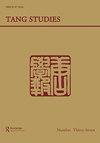“WHAT DO BARBARIANS KNOW OF GRATITUDE?” — THE STEREOTYPE OF BARBARIAN PERFIDY AND ITS USES IN TANG FOREIGN POLICY RHETORIC
IF 0.5
0 ASIAN STUDIES
引用次数: 15
Abstract
Abstract This essay argues that, in Tang foreign policy discourse, the stereotype of a moral dichotomy between barbarian perfidy and Chinese trustworthiness was primarily a tool for rhetorical posturing, deployed to justify making war on foreign peoples with whom the Tang had a prior peace agreement. This is demonstrated through close analysis of the political rhetoric surrounding Tang relations with neighboring steppe or Central Asian powers during the periods 625–645 and 734–739, with particular attention to contextualizing the rhetoric of the emperors Taizong and Xuanzong. The essay also presents a new interpretation of the famous 630 debate over the resettlement of the Eastern Türks, arguing that the rhetoric of perfidy, loyalty, and moral or cultural transformation in which that debate was conducted obscures its origin in a pragmatic strategic dilemma that could not be openly expressed.“野蛮人懂得什么是感恩?”——野蛮人背信弃义的刻板印象及其在唐朝外交政策修辞中的应用
摘要本文认为,在唐朝的外交政策话语中,野蛮人的背信弃义和中国的诚信之间的道德二分法的刻板印象主要是一种修辞姿态的工具,用于证明对与唐朝有事先和平协议的外国民族发动战争是正当的。通过对625-645年和734-739年期间唐朝与邻近草原或中亚大国关系的政治修辞的仔细分析,特别注意将唐太宗和玄宗的修辞置于语境中,可以证明这一点。本文还提出了对著名的630年关于重新安置东方土人的辩论的一种新的解释,认为辩论中进行的背信弃义、忠诚和道德或文化转型的修辞模糊了其起源,这是一种无法公开表达的实用主义战略困境。
本文章由计算机程序翻译,如有差异,请以英文原文为准。
求助全文
约1分钟内获得全文
求助全文

 求助内容:
求助内容: 应助结果提醒方式:
应助结果提醒方式:


